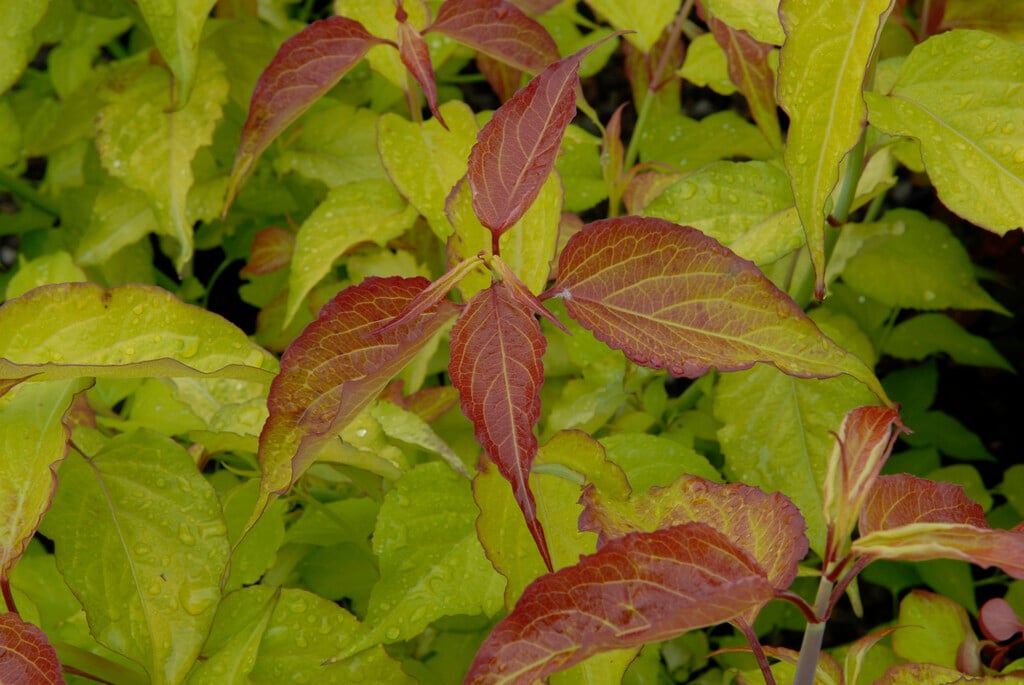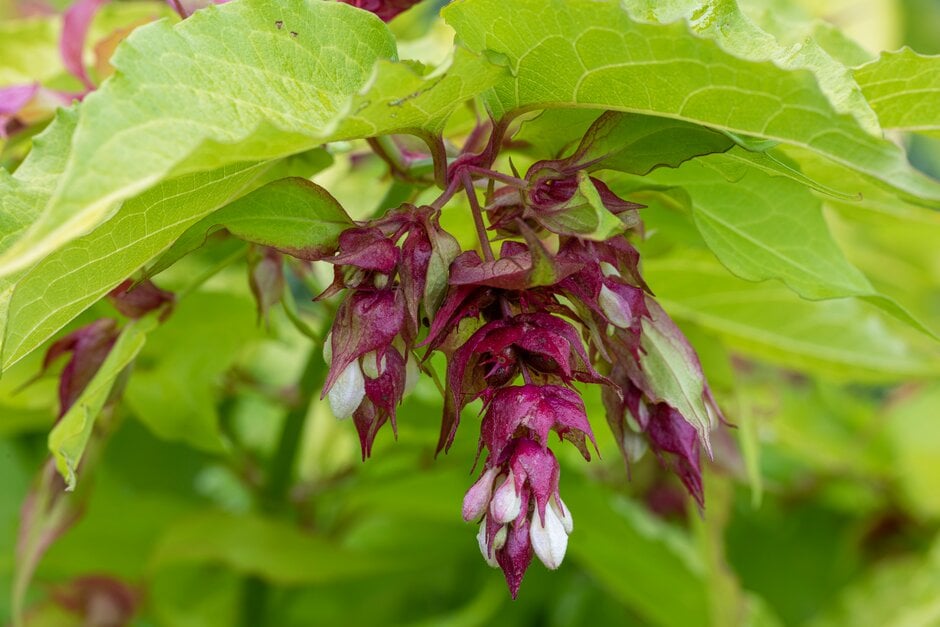Leycesteria formosa Golden Lanterns ('Notbruce'PBR)
Himalayan honeysuckle [Golden Lanterns]
A vigorous, upright, clump-forming shrub with hollow stems. Emerging growth is orange paling to bright golden yellow foliage all season and in sun. Inflorescences are pendulous with dark bracts and white tubular flowers protuding in summer followed by dark purplish black fragrant berries attractive to birds.
Size
Ultimate height
1.5–2.5 metresTime to ultimate height
5–10 yearsUltimate spread
1.5–2.5 metresGrowing conditions
Moisture
Moist but well–drained, Well–drainedpH
Acid, Alkaline, NeutralColour & scent
| Stem | Flower | Foliage | Fruit | |
| Spring | Orange Gold Yellow | |||
|---|---|---|---|---|
| Summer | Red White | Gold Yellow | ||
| Autumn | Black Purple | |||
| Winter |
Position
- Full sun
- Partial shade
Aspect
North–facing or South–facing or East–facing or West–facing
Exposure
Sheltered Hardiness
H4Botanical details
- Family
- Caprifoliaceae
- Native to GB / Ireland
- No
- Foliage
- Deciduous
- Habit
- Bushy, Clump forming, Columnar upright
- Potentially harmful
- Fruit are ornamental - not to be eaten. Wear gloves and other protective equipment when handling Pets: Fruit are ornamental - not to be eaten - see the HTA guide to potentially harmful plants for further information and useful contact numbers
- Genus
Leycesteria are deciduous shrubs with hollow stems, simple leaves and terminal and axillary racemes of tubular flowers, followed by fleshy berries
- Name status
Trade
How to grow
Cultivation
Thrives in free-draining soil in sun or semi-shade in a sheltered location such as woodland. Heavy wet soils are to be avoided.
Propagation
Propagate by seed or softwood cuttings
Suggested planting locations and garden types
- Coastal
- Cottage and informal garden
- Patio and container plants
- Low Maintenance
- Flower borders and beds
Pruning
Pruning group 6 in early spring when stems can be cut to ground level or Pruning group 3 after flowering.
Pests
Generally pest-free
Diseases
May be susceptible to honey fungus (rarely)
Love gardening
Sign up to receive regular gardening tips, inspiration, offers and more
View our Privacy Policy
Get involved
The Royal Horticultural Society is the UK’s leading gardening charity. We aim to enrich everyone’s life through plants, and make the UK a greener and more beautiful place.

